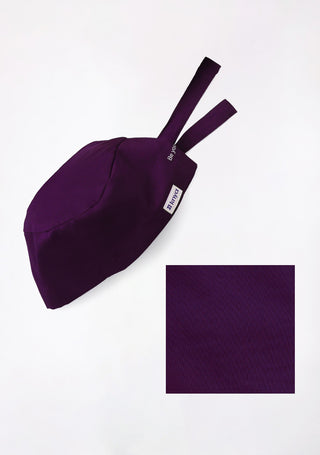Your stethoscope is more than just an accessory—it's a symbol of your profession, and an extension of your clinical skill. By storing it properly, you not only ensure its physical longevity but also uphold the professionalism that comes with caring for your tools.
Whether you're a budding medical student or a seasoned healthcare provider, a little extra care goes a long way. So, give your stethoscope the TLC it deserves—you’ve got enough patients to worry about already!
Why Proper Storage Matters?
Let’s start with the basics: why is stethoscope storage so important?
The average stethoscope is made of flexible rubber tubing, metal chest pieces (often stainless steel or aluminum), and soft eartips. These materials are durable, but they are also vulnerable to:
- UV damage from prolonged sunlight exposure
- Stiffening or cracking from temperature fluctuations
- Deformation from being stuffed into a bag or pocket
- Bacterial contamination from unhygienic environments
Proper storage reduces wear and tear, helps maintain acoustics, and ensures your Knya 6sense stethoscope remains hygienic and effective throughout its use.
Best Practices for Storing Your Stethoscope
Here’s how you can store your stethoscope smartly, whether you're at home, in the hospital, or on the go.
Enhance your diagnostic capabilities. Book your stethoscope and experience the difference in quality and performance.
Use a Dedicated Stethoscope Case
Investing in a sturdy, padded stethoscope case is one of the easiest ways to protect your device.
- Why it works: A good case shields your stethoscope from physical impact, temperature extremes, and contamination.
- What to look for: Choose a hard-shell case with a soft interior, a mesh pocket for accessories, and enough room to lay your stethoscope flat without coiling it tightly.
Pro tip: Never store your stethoscope coiled tightly, as it can cause the tubing to become permanently misshaped.
Keep It in a Cool, Dry Place
Storing your stethoscope in hot or humid environments (like your car dashboard or near windows) can degrade the rubber tubing and affect performance.
- Ideal environment: Room temperature (between 15°C and 25°C), with low humidity.
- Avoid: Direct sunlight, radiators, or any heat source.
Fun fact: Prolonged heat can “melt” the tubing slightly, making it sticky or prone to cracking.
Avoid Hanging It on Sharp Edges
Looping your stethoscope over hooks, chairs, or your neck for extended periods is a common habit—but it's not always a good one.
- Why it’s a problem: Hanging the tubing over sharp or narrow surfaces can lead to bending or kinking, which eventually reduces acoustic quality.
- Better method: If you must hang it, use a wide, padded hook or lay it gently on a clean surface.
Also: Constantly wearing it around your neck, especially over bare skin, exposes it to body oils, which can accelerate tubing degradation.
Clean Before You Store
Cleaning your stethoscope isn’t just about hygiene—it’s a longevity move.
- What to clean: Diaphragm, eartips, and tubing.
- How: Use 70% isopropyl alcohol wipes or mild soapy water on a soft cloth. Dry it thoroughly before storing.
- Don’t: Submerge in liquid or use strong disinfectants (like bleach).
A clean stethoscope reduces the risk of cross-contamination and keeps materials from breaking down due to sweat, oil, or residue.
Express your style! Shop our new 6sense stethoscope, now available in three stunning colors.
Avoid Leaving It in Pockets or Bags Unprotected
Tempting as it is to tuck your stethoscope into your lab coat pocket or backpack, it’s risky.
- Risks include: Bending, crushing, tangling with pens or other instruments, and exposure to sharp edges.
- Solution: Carry it in a small padded pouch or dedicated slot inside your bag when commuting.
If you're in a rush between rounds, place it carefully on a clean tray or counter instead of stuffing it in your pocket.
Uncoil and Let It Rest
If you’ve had your stethoscope coiled in your bag all day, give it a chance to breathe.
- Why: Constant tension on the tubing can cause memory deformation.
- How to fix it: Lay it flat overnight, or hang it loosely on a wide hanger.
This simple habit allows the tubing to relax and helps maintain its original shape.
Replace Worn-Out Parts
Storage can only do so much if parts are already aging or broken.
- Eartips should be replaced if they get loose, cracked, or uncomfortable.
- Diaphragm and bell should be inspected regularly for damage.
- Tubing should be replaced if it becomes stiff, sticky, or discolored.
Keep a small maintenance kit handy and check your stethoscope monthly.
Bonus Tips for Travel and Clinical Rotations
If you're a student or a professional hopping between clinics or hospitals, these quick hacks will help:
- Use a carabiner clip to hang your case on your backpack (no crushing in the bottom of the bag).
- Label your stethoscope to avoid mix-ups in busy wards.
- Avoid dangling it around your neck when walking between departments—use a retractable holder or clip it to your coat loop.
Common Mistakes to Avoid
Let’s bust a few common bad habits:
- Wearing it over your bare neck daily – Leads to oil buildup and tube cracking
- Storing it in extreme heat – Shortens tubing life
- Throwing it in a drawer – Increases the risk of scratches and damage
- Using harsh cleaning agents – Can corrode metal parts
- Wrapping it too tightly – Deforms the tubing permanently
Fixing these habits now will save you money, effort, and heartache down the line.
Lifespan Expectations: How Long Should It Last?
A well-maintained stethoscope can last 5 to 7 years or even longer. Premium models often come with extended warranties—some as long as 10 years—but only if you follow care guidelines.
By practicing proper storage, regular cleaning, and occasional part replacement, your stethoscope will stay in top shape, ready to help you diagnose with confidence.












